Pasts Imperfect (4.3.25)
Peopling the Past, Archaeobotanical Finds Under the Church of the Holy Sepulchre, AI Historical Drawings, South Asian Pigments, Wildfires in South Korea, & Much More
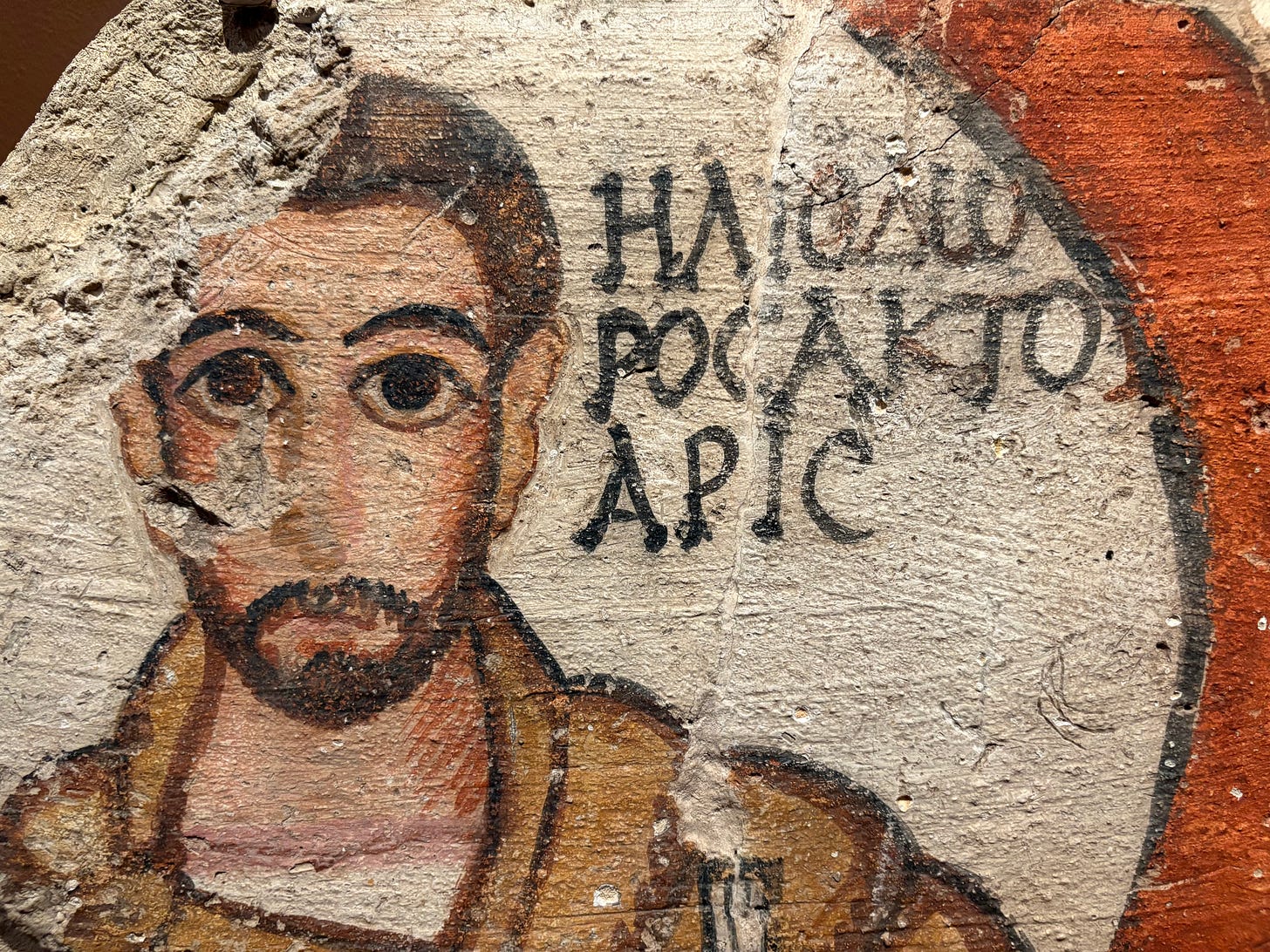
This week, the scholars behind Peopling the Past discuss how they work to recover individuals and stories overshadowed in traditional historical narratives, all while amplifying important scholarly research going on today. Then, questioning the source of ancient and medieval pigments, wildfires in South Korea, the historical hazards of using AI for illustrating the past, the medieval identity of the copper Lupa Capitolina, restorations at the Temple of Khnum, DOGE cuts at the NEH, new ancient world journals, and much more.
Peopling the Past: Responsibility, Community, and Ancient Mediterranean Studies
Our team founded Peopling the Past to produce open-access multimedia resources about the cultures of the ancient Mediterranean, West Asian, and North African worlds. We focus on individuals and stories overshadowed in traditional historical narratives, challenging stereotypes of whose histories we choose to tell. While we work to engage responsibly with the people of the past, we also recognize our responsibilities towards descendent and source communities whose tangible and intangible cultural heritage we study. Archaeology, Anthropology, and Classics are disciplines with long histories of extractive and colonial work. With our upcoming podcast season and blog series, we turn to these colonial pasts and their ongoing legacies.
The blogs and podcasts feature an international cohort of archaeologists, museum curators, and cultural heritage practitioners who talk about three related topics:
cultural heritage, looting, and the antiquities trade
museums, holdings, and repatriation
legacies of colonialism in archaeology and ancient Mediterranean studies
The blog series highlights important work being done to document and protect cultural heritage, such as GAZAMAP and the EAMENA project, and addresses issues of looting and provenance (the focus of the Mediterranean Antiquities Provenance Research Alliance). At the heart of this work, and that of our upcoming podcast guests, is the awareness that heritage connects to people in the modern day. Many of the projects and practitioners featured this season work directly with source and descendent communities, creating community connection and individual wellbeing through heritage engagement (like the LOGGIA project aims to do).

In the upcoming podcast season, launching April 29, 2025, we explore topics related to cultural heritage and legacies of colonialism with twelve international experts. We discuss the impact of excavations on landscapes and local communities, treatment of local dig workers, theft and removal of material culture and ancestral human remains, treatment of displaced heritage in museums, and issues threatening communities and cultural heritage today through war and violence, including deliberate heritage destruction and scholasticide. We also look forward to what a more critical and inclusive future could look like for ancient Mediterranean studies. To learn more about the upcoming season, check out the Season Four Trailer, featuring hosts Chelsea Gardner and Melissa Funke chatting with Christine Johnston, this season’s producer, about what to expect!
As part of our work to engage responsibly with the pasts we study, we also organized a colloquium in March 2023 in Vancouver, BC, entitled “Presenting the Past: Responsible Engagement and Ancient Mediterranean History,” bringing together diverse knowledge creators who actively work to break down barriers to diversity and inclusion in ancient Mediterranean scholarship. During this colloquium, participants discussed “responsible” public scholarship and how we – both within and outside the academy – might contribute to public discourse about the ancient Mediterranean that is inclusive of past diversity and modern audiences. These conversations highlighted a need for more substantial contributions about responsible public scholarship especially at a time when Classics, and its related disciplines are actively confronting their colonial, extractive, and Eurocentric roots.
Ancient Pasts for Modern Audiences: Public Scholarship and the Ancient Mediterranean, co-edited by Chelsea A.M. Gardner and Sabrina C. Higgins, represents our contribution to this discussion. This recently published proceedings (Routledge 2025), brings together the work of the colloquium participants and additional specialists working in academia, museums, and public media to discuss the challenges and opportunities within public facing scholarship. The diverse perspectives offered by these authors, many of whom are students, early career researchers, and artists, are essential to the production of responsible and inclusive scholarship on the ancient Mediterranean, North Africa, and West Asia. The volume’s sections – Museums, Teaching and Learning, and Global and Local Projects – each address challenges faced within these interrelated fields and offer ways for us to overcome the exclusionary narratives that plague them. The volume therefore reflects our vision for the future of public scholarship, and it is our hope that Ancient Pasts for Modern Audiences becomes a useful resource for anyone with an interest in public scholarship or who teaches, researches, or engages with the ancient Mediterranean. In the spirit of public scholarship, this volume was published Gold Open Access and is available for download HERE.
Finally, we would like to extend our thanks to everyone who supported the colloquium and volume (for a full list of acknowledgments, see the volume Preface pp.xiii-xv); to Western Washington University, who have supported two undergraduate research assistants, Abbey Raynes and Megan Ward, through a Social Justice and Equity grant; and to Acadia University for funding a teaching assistant, Adele Leger-Leblanc.
Global Antiquity and Public Humanities
Excavations continue under Jerusalem’s Church of the Holy Sepulchre. And a newly released statement from the excavation published in the Times of Israel notes that archaeobotanical and pollen analyses indicate the existence of olive trees and grapevines growing on the land underneath the church. First, it is important to note that the headlines claiming these excavations “prove” there was a garden near where Jesus was crucified (as mentioned in John 19:41) wildly misunderstand what Biblical archaeology can and cannot do. Second, as the article notes, the dating is not yet confirmed: “[f]rom the archaeological context and strata, [the new data] belongs to the pre-Christian era, however, radiocarbon testing has not yet been carried out.” What I (Sarah here!) found more interesting was the “hundreds of animal bones, butchered and eaten throughout the millennia by priests and pilgrims.” These zooarchaeological finds were published in a 2023 study. Definitely tell us more about pilgrim and priestly dietary habits. Please pass the pigeon. 🕊️
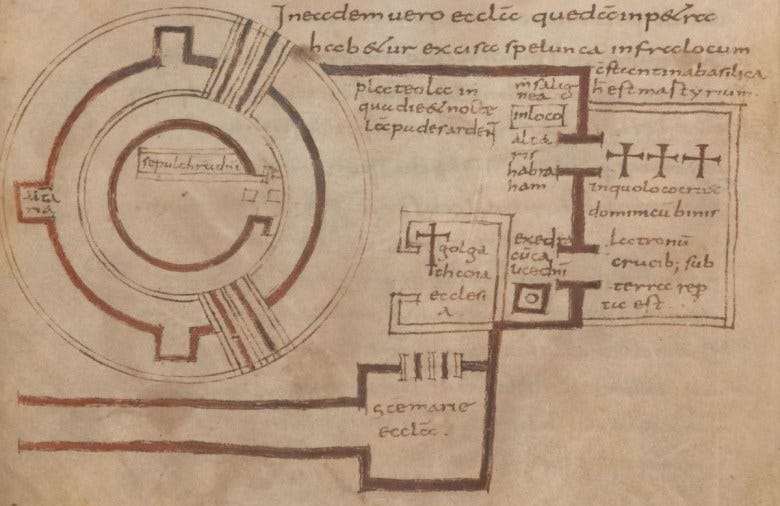
At the Harvard Gazette, they speak to renowned art historian Jinah Kim about the misperception that medieval and early modern pigments like cobalt, used in many South Asian works of art, had originally come from Europe:
“I realized a lot of pigment databases available out there are based on a Western European canon, because that’s where the research has been,” Kim said. “If you look at Asian materials, especially South Asia, Himalaya, and Southeast Asia, everything is so colorful but the baseline understanding of what colorants were available is not known.”
In 2018, Kim, conservator Michele Derrick, and the DARTH digital humanities center helped her begin the open access database “Mapping Color in History Project.” Data, scientific analysis, and maps together make for a colorful (and important) argument for indigenous pigment production in Asia.

Over at the Associated Press (AP), they report that the largest wildfires in South Korean history are currently devastating the country, its people, and its cultural heritage. At least 27 have died and the Gounsa temple, a famed Korean Buddhist head temple, caught fire last week. The sacred building was built in 681 CE in Danchon-myeon, in southwest South Korea.
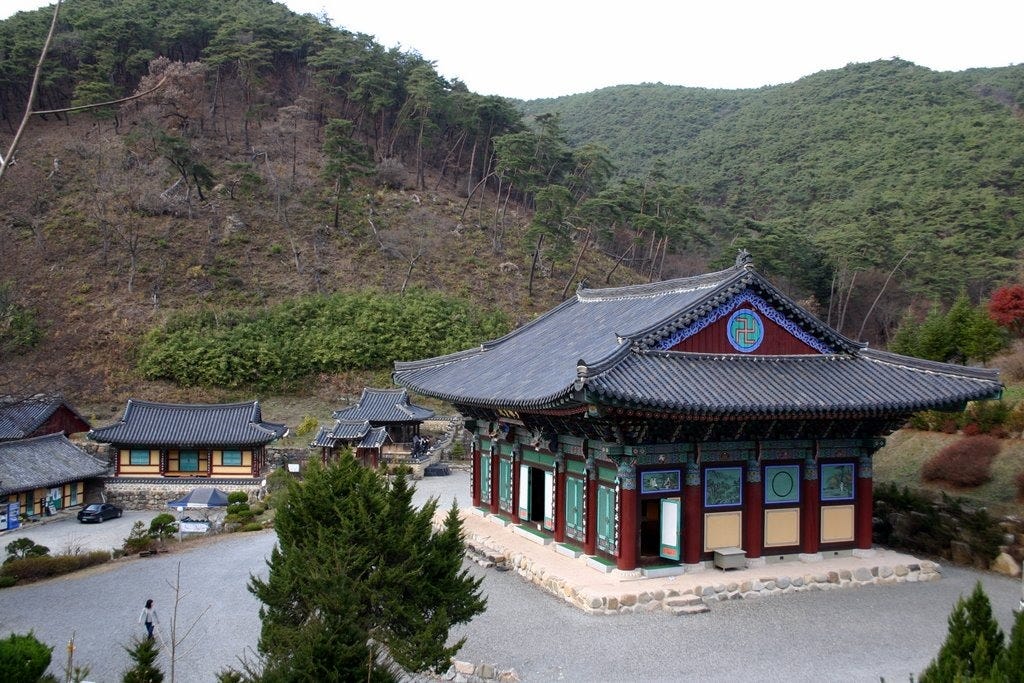
In Sapiens, archaeologist and digital cultural heritage specialist Colleen Morgan discusses “The Hopes and Hazards for AI in Reconstructing Ancient Worlds.” Morgan notes that AI’s reconstructions of the past are often extremely biased and misrepresentative because it tends to reject new and important scientific research; favoring the prior majority findings. The LLMs that AI are trained on also perpetuate the same biases as the people who made the data:
Even before the use of AI, it was widely accepted within archaeology that visualizations of the past are highly fraught and should be treated with extreme caution. For example, archaeologist Stephanie Moser examined 550 reconstructions published in academic and popular texts on human evolution. Her review found highly biased depictions, such as only males hunting, making art and tools, and performing rituals, while women were in more passive roles…This is exacerbated as they are incorporated into generative AI datasets. Beyond the use of outmoded data, generative AI visualizations of the past can be extremely poor.
While AI has a hard time indicating things like doubt or uncertainty, modern scientific illustrators indicate it through things like smoke, Morgan notes. An important reminder that we tend to trust the visual (or used to), but allowing AI to reform our vision of the past can be a quite dangerous, regressive prospect.
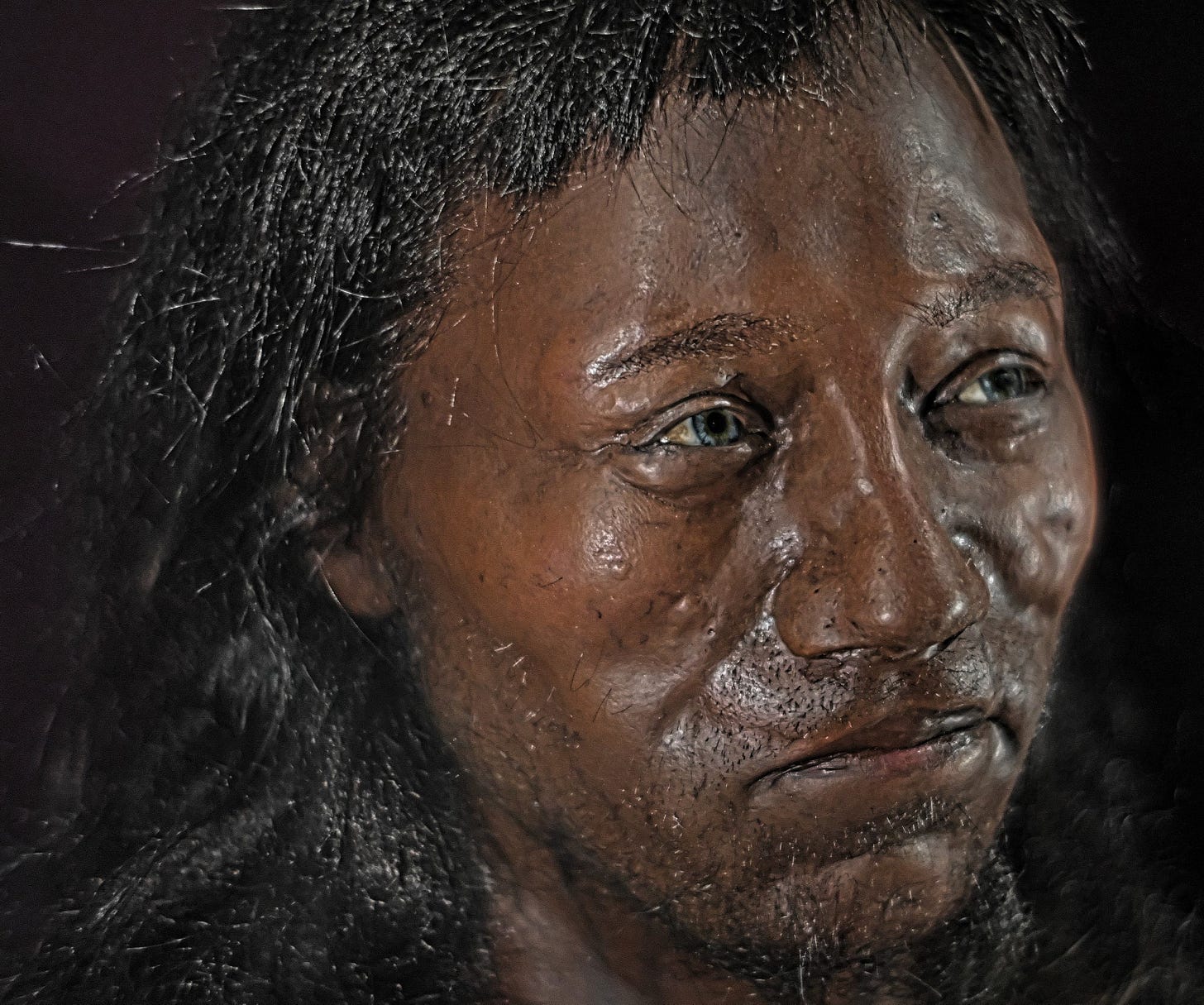
A new, open access study of the geochemical and Pb isotopes from bronze samples again confirms that the Lupa Capitolina—as was stated in 2006—is not Etruscan or ancient. It is medieval, folks. The famed bronze statue dates to 1000-1199 CE according to lead isotopic analysis, so just modify your standard tour of the Capitoline Museums accordingly, while also mentioning that the scientific study of the metallurgy shows that the copper was not from Sardinia. In bocca al lupo!

This week, the month of Ramadan came to a close and Eid al-Fitr was celebrated by the 1.9 billion Muslims across the globe. In the spirit of cultural celebration and openness, you may want to take a look at “Alphabetical list of Open Access Islamic Manuscripts Collections.” Or explore the al-Ṯurayyā project, a gazetteer and geospatial model of the early Islamic world.

Restorations to the Greco-Roman Temple of Khnum at Esna in Egypt reported in Archaeology magazine are stunning, as are the newly cleaned up depictions of celestial bodies depicted on the ceiling tiles in the temple (team Scorpio). In addition, a new article published in American Antiquity looks at the use of mano and metates (tools for grinding corn) by Indigenous Peoples of North America. And you might also be stoked to know that archaeologists have now uncovered a part of the “long-lost walls and north gate of Selinunte” in Sicily, according to the Greek City Times. This is really adding to my mental plan for a “White Lotus: Season II” Sicily tour (I promise it won’t end in the same way).
This week, heartbreaking news came that DOGE had entered the NEH and is set to slash its staffing and budget by up to 80%, according to an article in the New York Times. For the thousands of us who have benefited from NEH funding and summer stipends, this is a horrendous blow to the arts and humanities. When you combine these cuts with the shredding of the Institute of Museum and Library Services (IMLS) funding since March 14, the pattern is quite clear. As the Author’s Guild stated, “It’s about limiting Americans’ access to information and diverse perspectives—a direct contradiction of the principles upon which our democratic society was founded.” The National Humanities Alliance is offering some next steps for those hoping to protest the cuts.
Finally, archaeologist Flint Dibble sat down with author and Latin teacher Maia Lee-Chin about her new book Et Cetera. In the interview they discuss public scholarship, Latin, and the state of Classics as a field.
New Antiquity Journal Issues (by yaleclassicslib.bsky.social)
American Journal of Philology Vol. 146, No. 1 (2025) #openaccess
L'Année épigraphique 2021 (2024)
Arion Vol. 32, No. 3 (2025)
Αριάδνη=Ariadne Vol. 30 (2023-2024) #openaccess
Atlantís - review Vol. 62 (2025) #openaccess
Classical Philology Vol. 120, No. 2 (2025)
Cuadernos de Filología Clásica. Estudios griegos e indoeuropeos Vol. 35 (2025) #openaccess
Greek and Roman Musical Studies Vol. 15 (2025)
Hesperia Vol. 94, No. 1 (2025)
Historia Vol. 74, No. 2 (2025) NB Marios Anastasiadis, “Slave Medical Treatment in Classical Greece Before and After the Slave Market”
Mouseion Vol. 20, No. 2 (2023); Vol. 20, No. 3 (2023)
New England Classical Journal Vol. 52 No. 1 (2025) #openaccess NB Hannah Čulík-Baird “The Life of Terence, Revisited”
Semitica et Classica Vol. 17 (2024) NB Moshe Blidstein “Sacrificial firewood in the ancient Mediterranean and beyond: a comparative analysis”
Ancient Philosophy Today Vol. 7, No. 1 (2025) Caterina Pellò “Ancient Greek Philosophy and Feminism: A Field Guide”
Bulletin of the History of Medicine Vol. 98, No. 4 (2024) NB Kassandra Miller “Making Time for the Body: Galen on Time Scarcity and Health”
Études platoniciennes Vol. 19 (2024) #openaccess
History of Philosophy Quarterly Vol. 41, No. 3 (2024)
Medizinhistorisches Journal Vol. 59, No. 4 (2024)
European Journal of Archaeology Vol. 28, No. 1 (2025) NB Rachel Pope & Mairi H. Davies “Peggy Piggott and Post-War British Archaeology”
Internet Archaeology, No. 70 (2025) #openaccess Urban Archaeology and the Cities of Tomorrow.
History of Religions Vol. 64, No. 3 (2025)
Journal of Early Christian Studies Vol. 33, No. 1 (2025)
Method & Theory in the Study of Religion Vol. 37, No. 2 (2025)
Revue de Qumran Vol. 36, No. 2 (2024)
Comparative Oriental Manuscript Studies Bulletin Vol. 10 (2024) #openaccess
Bamboo and Silk Vol. 8, No. 1 (2025)
Eurasian Studies Vol. 2, No. 2 (2024)
Journal of Egyptian History Vol. 17, No. 2 (2024)
Byzantine and Modern Greek Studies Vol. 49, No. 1 (2025)
Byzantinische Zeitschrift Vol. 118, No. 1 (2025)
Pertita Vol. 35 (2024)
Speculum Vol. 100, No. 2 (2024)
Traditio Vol. 79 (2024)
Troianalexandrina Vol. 23 (2023) Regards médiévaux sur l'écrivain antique
Exhibitions, Events, and Workshops
On April 8th at 3:30–5:00 PM EST, Join four Goodwin prize winners (Claire Bubb, Colin Webster, Kassandra Miller, and Aileen Das) to discuss “New Directions in Ancient Medical Research.” The authors will address how they settled on the topic of their first monographs, the publication process and the feedback they received along the way. To register, use this link.
On Tuesday, April 8th, 2025 at 5:00–6:30 BST, Paula Granados García (Head, Endangered Material Knowledge Programme, British Museum), will discuss “Experimental and Collaborative 3D imaging for material culture documentation: a case study from the Endangered Material Knowledge Programme at the British Museum.” The is a hybrid keynote lecture for the Summer School in 3D Imaging and Modeling for Cultural Heritage that explores how, “[o]ver the last few decades, 3D technologies—from photogrammetry and 3D scanning to virtual or augmented reality and 3D printing—have become increasingly prevalent in the field of cultural heritage.” Register here.

On Thursday, April 10th at 5:30pm EST, Akin Ogundiran (Northwestern University) will speak on “Archaeology of the Ọyọ Empire: Domesticity of Governance and Politics of Dependency, 1600-1836” for the AIA at UMass Amherst, Integrated Learning Center S211. “Between ca. 1650 and 1800, the Ọyọ Empire was the largest political formation in West Africa, south of the River Niger. Over the past twenty years, Akin Ogundiran has conducted archaeological research in the capital, colonies, and provinces of the empire to understand the strategies of Ọyọ expansion and the everyday lives of different segments of its population. In this talk, Ogundiran juxtaposes the materialities of military conquest, colonization strategies, and household politics to tell an intimate story of one of the most important imperial formations in Africa during the Early Modern Period.” For Zoom attendance at the lecture, please register here.
If you are up early next Friday, April 11th (8:15am EST), The Digital Repository of Endangered and Affected Manuscripts in Southeast Asia (DREAMSEA) initiative will provide an overview of seven years of work preserving and digitizing the manuscript heritage of Southeast Asia.
Not yet ready for the Rapture? On Monday, April 14th, at 7pm, the Michigan Center for Early Christianity will virtually host Tina Pippin’s lecture “Rapture Ready: The Rapture in the American Imagination"
On a bit of a side note, this is Pasts Imperfect’s 100th issue. We are so grateful to our readers, proud of the hundreds of writers we have either published or amplified, and excited about the years to come. So remember to tell us what you want to hear about, to pitch us your ideas, and to tell us about the stories you care about. PI will always be free and we pay our writers for their labor. Andiamo!
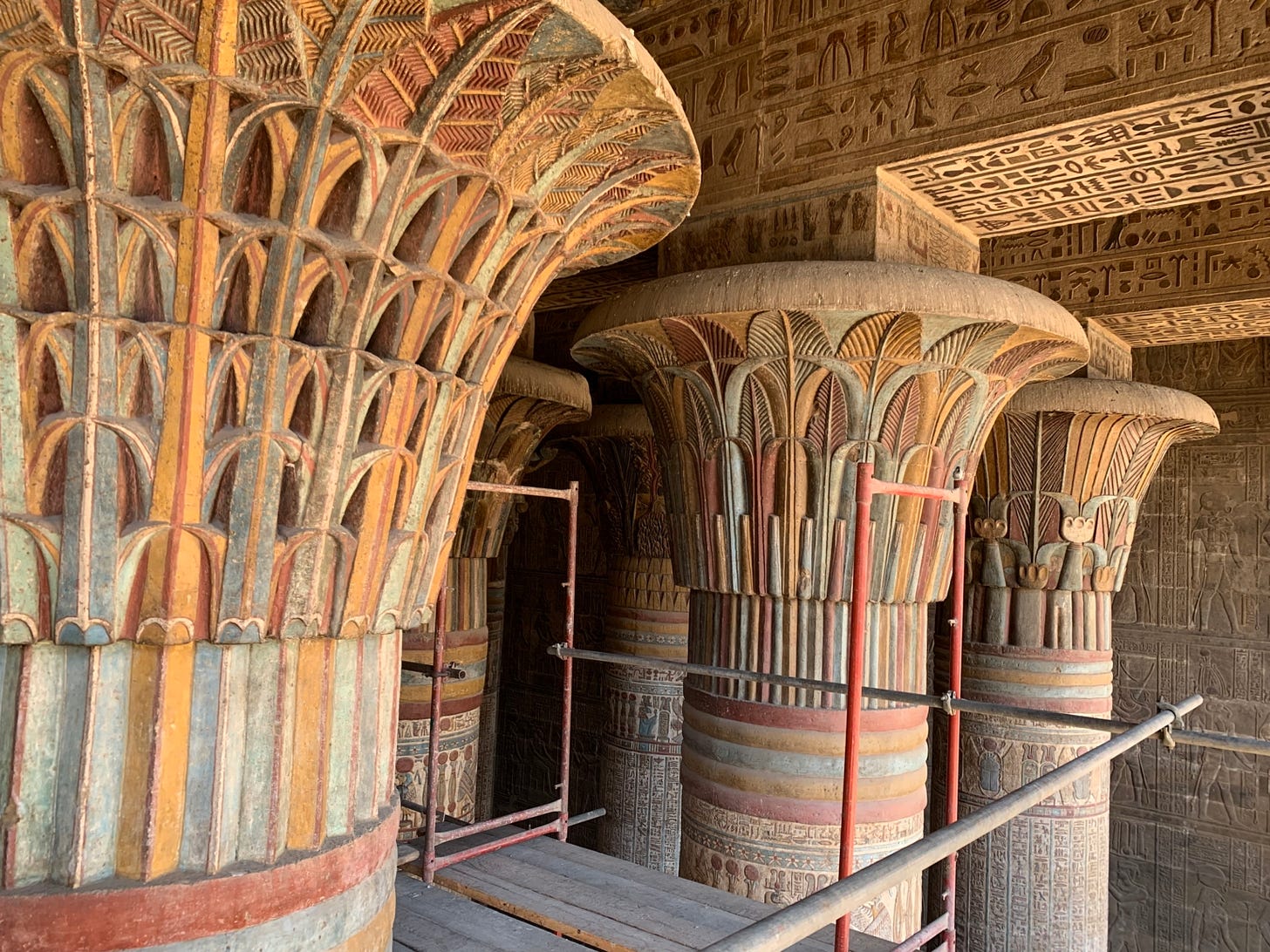















Your work is essential. Bravi tutti.